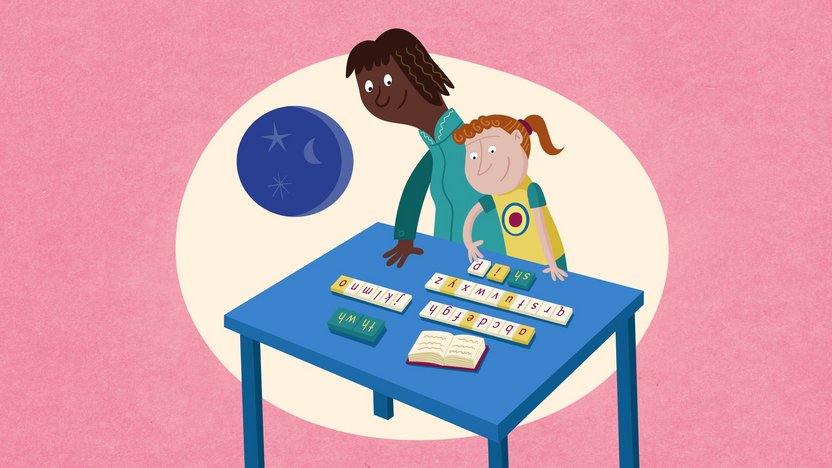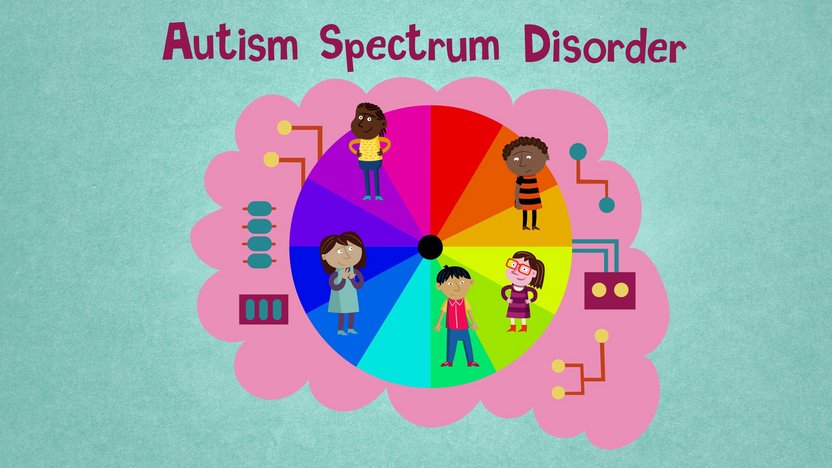Understanding Autism

By Lola Aneke, MAT, SpED, BCTS, BCCS, Executive Director C.A.D.E.T. Academy.
What are special educational needs?
Individuals with special needs include those who are diagnosed with a developmental or learning disorder. Meeting the educational needs of these individuals can sometimes be difficult in a regular classroom. Their educational needs would require specialised approaches and sometimes specialised equipment in a special education setting (schools/classrooms). Special education settings are designed to cater for each students' individual differences and needs. It’s important to continually create awareness on what special needs is all about in order to achieve an inclusive society.
Who are students with special needs?

The term Special (or Additional) Needs refers to persons who have a learning difference or disability that makes it more difficult for them to learn than most persons their age. Special needs in the educational setting comes into play whenever a child's educational program is officially altered from what would normally be provided to students through an Individual Education Plan (IEP) which is sometimes known as an Individual Program plan.
Special education is designed to address the students' individual differences and needs. Ideally, this process involves assessments, individually planned and systematically monitored arrangement of teaching procedures, adapted equipment and materials, accessible settings, and other interventions. This is aimed at helping learners with special needs achieve a higher level of personal self-sufficiency and success in school and in the society.
According to the United States Individuals with Disabilities Education Act (IDEA), “special education is education which involves specially designed instructions to meet the unique needs of people with disabilities.” Although there are various forms of special needs in children and adults, some of the most commonly known ones are Autism and Dyslexia.
What is Autism and what is Dyslexia?
Autism
Autism or Autism Spectrum Disorder (ASD) according to the fifth edition of the Diagnostic and Statistical Manual of Mental Disorders (DSM-5), refers to a spectrum of neurodevelopmental disorders characterized by impairments in several areas of development such as reciprocal social interaction skills, communication skills, or the presence of stereotyped behavior, interests and activities. Prior to the DSM-5, the definition of ASD included persons diagnosed with Pervasive Developmental Disorder not otherwise specified (PDD-NOS), Asperger's Syndrome and childhood disintegrative disorder. However, these have now been included as part of the broader diagnosis of ASD in the DSM-5.
Autism is a complex developmental disorder that typically appears during the first three years of life. This disability has the potential to delay normal development in children. Studies have shown that boys are 3-4 times more likely to be affected with autism than girls, and one child in every 54 in the United States may have some form of ASD. In addition, children with autism could have other disabilities such as intellectual disability, fine motor delays, seizure disorders, attention deficit hyperactivity disorder (ADHD) and learning disabilities (LD). Individuals with autism may also experience sensitivities in the five senses of sight, hearing, touch, taste and smell.

Although there is no known single cause for autism, it is generally accepted that the condition is caused by some unusual structure or function in the human brain. Brain scans have shown differences in the shape and structure of the brain of children with autism versus children without autism. In addition, researchers are investigating a number of theories, including the link between heredity, genetics and medical problems.
Also, in some families, there appears to be a pattern of autism or related disabilities, thus supporting a genetic basis to the disorder. However, no single gene has been identified as causing autism. Currently, there is no known cure for autism. However, therapies and behavioral interventions have been designed to remedy specific symptoms and are known to bring about substantial improvement. Thus, a typical intervention plan would involve medication, therapies, educational and behavioural interventions that meet the specific needs of individual children. Most professionals agree that early intervention is key in supporting a child with autism.
Dyslexia
Dyslexia is commonly described as a language-based disorder and could be characterized by reading difficulties despite normal intelligence in a child or adult. The International Dyslexia Association defines dyslexia as:
A specific learning disability that is neurobiological in origin. It is characterized by difficulties with accurate and/or fluent word recognition and by poor spelling and decoding abilities. These difficulties typically result from a deficit in the phonological component of language that is often unexpected in relation to other cognitive abilities and the provision of effective classroom instruction. Secondary consequences may include problems in reading comprehension and reduced reading experience that can impede growth of vocabulary and background knowledge.
Dyslexia is the most common cause of reading, writing, and spelling difficulties and affects males and females nearly equally, as well as people from different ethnic and socioeconomic backgrounds.
Persons with dyslexia are sometimes referred to as slow learners. However, describing a child with dyslexia as a slow learner would be incorrect because accurate testing of the child‘s intelligence would most times reveal a normal intelligence. As a matter of fact, over the years, educators have struggled to formulate a clear and comprehensive definition of the term dyslexia as a learning disability, which describes children with seemingly normal intelligence who, nevertheless, have problems with reading, writing, spelling, organizing, and comprehension.
Characteristics of Autism and Dyslexia
Characteristics of Autism
Some of the known characteristics of autism are impairment in social interaction, which includes difficulty in staying focused, difficulty with social reciprocity and sensory processing. Others are impairment in communication which includes delayed or absence of language and communication skills and difficulty understanding abstract concepts. Additionally, individuals with autism may display restrictive, repetitive and stereotypic patterns of behavior such as limited interest and inability to see the bigger picture while focusing on irrelevant details. These individuals may also display some form of sensory processing disorder whereby they experience hyper or hypo sensitivity to stimuli.
Furthermore, some persons with autism could display what is known as Autism Savant Syndrome. This is a condition which could lead to a demonstration of exceptional skills or brilliance in specific areas, such as rapid calculation, art, memory, or musical ability.
Characteristics of Dyslexia
Some of the known characteristics of dyslexia are late talking, learning new words slowly and a delay in learning to read. Others are difficulty memorising, difficulty spelling, or difficulty thinking and understanding. Additionally, dyslexic individuals may display delayed reading ability, learning disability or speech delay. Persons with dyslexia may also display language processing difficulties, inconsistent listening comprehension, poor sight word recognition(i.e., knowing a word by sight rather than needing to break the word apart) and difficulty remembering names and shapes of letters, or naming letters rapidly.
High Functioning Autism/Aspergers
Asperger's syndrome is a neurodevelopment disorder on the autism spectrum, which is considered to be on the mild end of the spectrum. Persons with Asperger's syndrome are noted to be generally higher functioning than regular autism. This means that these individuals do not have delayed language skills and cognitive development as found in ASD. Although, an individual with Asperger's syndrome may experience significant difficulties in social interaction and nonverbal communication, along with restricted and repetitive patterns of behaviour and interests, they usually have normal or above normal intelligence. Thus, persons with Asperger’s syndrome are often able to receive education in a regular classroom. Also, communication training and behavioural therapy can help persons with Asperger’s syndrome learn to socialise more successfully.
Co-Occurence of Autism and Dyslexia

Available research shows that some individuals with autism spectrum disorders may have a higher risk of being diagnosed with some other neurodevelopment disorders and learning disabilities. The most common of this type of co-occurrence (which is also known as ‘co-morbidity’) is dyslexia and autism, showing both cognitive and behavioural features (Reiersen and Todd, 2008; Simonoff et al., 2008).
One common challenge for children with dyslexia is misinterpretation of spoken language, which can also manifest itself in comprehension. Additionally, this could occur along with pragmatic language impairment and may be difficult to distinguish from communication difficulties associated with high functioning autism. Some children with these co-occurrences may also have difficulties with their social abilities. For example a child with pragmatic language impairment as found in the co-occurrence of autism and dyslexia, may have difficulty interpreting jokes or instructions (Griffiths, 2007).
Support and Intervention
For children with ASD or dyslexia, early intervention can improve learning, communication and social skills, as well as underlying brain development. Applied behaviour analysis (ABA) and therapies based on its principles are the most researched and commonly used behavioural interventions for autism. Many children affected by autism also benefit from other interventions such as speech and occupational therapy.
Children with dyslexia will benefit from the application of multisensory learning approaches which involve techniques such as writing words and sentences with tactile materials, and use of physical activities to practice spelling. Effective instructional approaches for reading, writing and maths, which are explicit and systematic are also helpful intervention methods for dyslexic students. The use of assistive technology and tools will also help strengthen the dyslexic student’s confidence in reading, writing, and comprehension.
Conclusion
For some parents, receiving a diagnosis of autism and/or dyslexia in their child could be quite devastating, but for some others it can be a relief to have a name for their child's unusual behaviour. Some parents may even become overwhelmed by fear and grief for the loss of the future they had hoped for their child. However, more often than not, these strong emotions could also motivate parents to find effective help for their children. Deciding to join a parent support and advocacy group and talking to other parents may prove helpful. In any case, the diagnosis is important because it can open the doors to many services, and help parents learn about interventions that have benefited children with similar traits.
Parents are their children's first, best teachers. It is therefore advisable for them to be integral members of the assessment and planning team for their children. The parent is in a position to know the child much better than the special education professionals and other related service providers. Therefore, no one can better explain what motivates, interests and comforts a child than his or her parents. This information is key to planning intervention for children with autism or dyslexia. The role of parents is vital to the implementation of educational and developmental interventions in the home environment. The level of involvement and commitment of parents would enhance the probability of generalising the skills which the child learned at school or during intervention at home and other environments.
As a special educator, the most important point I want to make is that individuals with autism or dyslexia have the potential to grow and improve. Contrary to what some parents may have heard from various sources, autism or dyslexia can be managed effectively with the right supports and interventions. However, it is crucial to find effective services, interventions, and education for children with autism or dyslexia as soon as possible.
It is encouraging to note that it’s never too late to improve the overall quality of life for a child with autism, dyslexia or any other form of disability. However, the earlier such children receive appropriate intervention, the better their chances of an independent adult life. In some cases, their progress through life may be slower than others; nevertheless they can still live happy and productive lives when given appropriate support and the right mix of interventions.
By Lola Aneke, MAT SpED BCTS BCCS Executive Director C.A.D.E.T. Academy
Visit Comprehensive AUTISM and Related Difficulties Education and Training Center